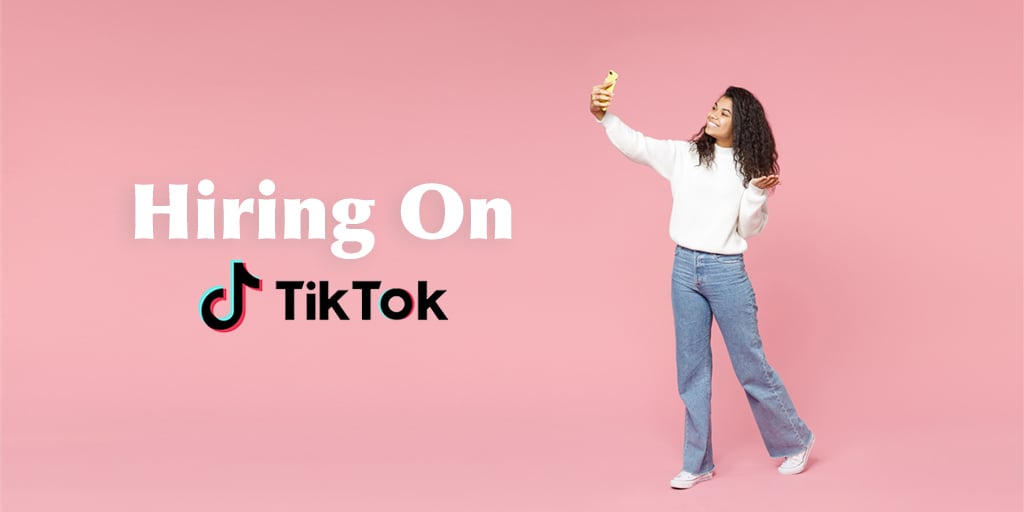The competition for hourly workers is stiff. Each pause in the application process increases the chance that a quality candidate will get an interview or an offer from your competitor. And the employer with a more engaging interview process is more likely to win the competition for the applicant’s attention.
According to a recent report, 37% of hourly workers say getting hired quickly is more important than pay and being close to home. As a business owner, the best advantage you have in hiring is how fast you can get a qualified candidate from application to first day.
So, how can you speed things up and hire the best hourly workers as quickly as possible? By using text and automation tools. In this post, we’ll show you how these tools create a speedy hiring process that benefits both managers and job seekers alike.
1. Make text message communication your new best friend
Are you mostly hiring millennial and Gen Z workers? Then you’ll want to adapt how you communicate throughout the hiring process.
According to recent survey data, 75% of millennials avoid phone calls because they’re too time-consuming. And some members of Gen Z think email is outdated and painful to use. So, incorporating text messaging into your hiring process is a must. Plus, texts have as high as a 98% open rate and are largely read within the first 90 seconds
Sure, texting can feel casual to many of us who didn’t necessarily grow up with it. But it’s the best way to communicate with most of today’s workers. It’s convenient for both you and them—and in today’s world, it’s also a sign of respect for the applicant’s time and schedule.
2. Simplify the application process
Most businesses have moved some or all of their job applications online. That's good. But applicants still have to type in your home page, navigate the menu to the hiring section, identify the location they're applying for... that’s asking a lot of them. Put another way: It’s not how they’re already using their phones.
Make the process as quick as possible for them. Use text-to-apply features in your job postings (which you can use to send a direct link to the application, or even to initiate a quick application-by-text). Alternatively, you can use QR codes the same way. Just scan and boom!—they’re applying to work at your restaurant.
Similarly, keep the job application as brief as possible. If candidates have to go digging for information, a percentage won’t come back—but you can once again use texts to remind them to continue their unfinished applications.
3. Follow up with text to find the right fit
The problem with a quick application—from the hiring manager’s perspective, anyway—is the lack of information. Use text messaging to engage your applicants while getting to know them better.
Brands such as A&W ask people to send in short video resumes or to film responses to certain application and pre-interview questions. These allow job seekers to show off their personalities in ways that might be more natural or comfortable than written answers—and certainly more insightful than answering yes/no questions.
Similarly, you can engage with applicants by sending them videos or interactive media about your workplace, your benefits, your culture. The possibilities here are endless.
4. Schedule interviews ahead of time via text message
In our own stress to find quality candidates, we sometimes forget that the process is stressful for them too. Choosing to schedule interviews by text instead of calling can allow candidates to put themselves in the right headspace.
And—we can’t stress this enough—if you’re conducting the interview itself by phone or video, schedule it ahead of time by text, rather than simply calling to talk spontaneously. This helps candidates prepare and refresh their memory about the role since they’ve likely applied for multiple jobs.
As a bonus: Because you’ve already opened the door to texting, they’ll feel able to contact you instantly if the need arises before or after the interview. Say they’re having technical difficulties, or a doctor’s appointment ran long, or your hiring manager doesn’t show. They can text you to check in, rather than leaving anyone hanging.
5. Follow best practices for engaging by text
Just because text messaging is simple and relatively informal, don’t make the mistake of thinking it’s casual and easy. Texting comes with its own best practices, just like any tool, and here are our recommendations:
- Ask candidates for their permission. Unsolicited texts can feel invasive or unwanted. So, let applicants tell you what they prefer. Include a quick section of the application for candidates to mark their preference for communication, be that text or email (or even a phone call).
- ID yourself and use a work phone. Anytime you initiate text contact, lead with your name, your position and your company. That tells recipients your message is not spam, and it offers them context for who’s communicating. And by using a work phone, you keep a healthy boundary between your work and your personal life (not to mention not giving your personal number to strangers).
- Keep it professional. Of course, your text message can be friendly—and if your branding is more casual, you can tailor the formality of your messages to match. But it’s essential to convey professionalism by, for example, using complete sentences and avoiding abbreviations and shorthand.
- Pay attention to timing—and be timely. Your initial contact should always come during regular business hours (unless the candidate has indicated a different preference in the application). And while you shouldn’t be expected to text outside your own working hours, if a candidate texts you back during your evening shift, by all means, respond. Prompt responses show you are motivated to work with them—and keep the hiring process speedy.
6. Use smart screening
That initial process of sifting through applications consumes a lot of time, particularly if the applicant flow is as high as most businesses need it to be. If the application process is electronic and standardized (either by text, via the restaurant’s app or on the website), you can set hiring parameters to screen applicants for basic requirements.
More advanced hiring technologies can also help you assess the quality of applications before progressing to the interview stage. Thus, smart screening takes two basic forms: information gathering to see if candidates meet your basic requirements and personalized responses to engage applicants and to self-filter the ones who are less serious.
7. Automate interview scheduling
Another drain on hiring managers is the effort of making back-and-forth calls and texts just to schedule a single interview. Imagine if every applicant who passes the smart screening didn’t have to wait for a follow-up to schedule an interview—but instead, had the option to self-schedule immediately after applying.
An automated hiring platform can provide permission-based calendar access to promising candidates so they can schedule an interview with you or your hiring managers during the times you’ve marked as available. The applicants get an immediate confirmation text, and the hiring manager receives a notification that an interview is scheduled.
This is how quick-service restaurant Fuzzy’s and Frisch’s schedules applicants in less than two hours. It’s as close to instantaneous as it gets—and it’s how you can get applicants in the door (or on the phone) for interviews without a single moment of logistics work on the manager’s end.
8. Send automatic text confirmations
Even with the fast-as-it-gets process, managers still risk no-shows for interviews. An automated system can utilize text confirmations to minimize ghosting and keep managers from sitting around waiting.
With text confirmations, applicants automatically receive a text message from the hiring manager shortly before their interview asking them to reply to confirm. If they don’t reply, managers know not to wait for them and can instead refocus their energy on the many other needs demanding their attention. And if a candidate needs to reschedule, that option can be part of the text message, too.
This works. Jamba, for example, recently reduced its ghosting rate by 90% by using automation and two-way texting technologies.
9. Preserve the personal touch
“Automated,” of course, doesn’t have to mean “impersonal.” Applicants are still human beings, after all, and so are your hiring managers—and an automated system is simply a way to more efficiently get two people talking.
To that end, we recommend that hiring managers add appropriate personal touches in their communications so that applicants don’t feel like just another number. Even just using the applicant’s name at the start of correspondence can help, as can making specific positive comments on the experiences and information they share in their application.
Final thoughts
Being the first to offer applicants a position doesn’t guarantee they’ll take it—but it certainly increases the chance they’ll accept. Plus, a faster, more efficient hiring process streamlines the process for your managers, maximizing their time and effort to focus more on the restaurant’s countless other needs.
You can use the 9 tips we’ve shared in this blog post to speed up your hiring process using text and automation tools. And if you’re looking for software that makes all of that incredibly easy, request a demo of Workstream!




